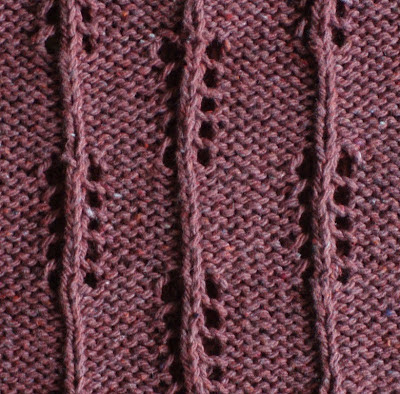I am knitting Véronik Avery's Lace Ribbon Scarf for myself just now. It's a free pattern that first appeared in Knitty in 2008 - a very popular pattern, with over 6,000 projects in Ravelry. I have made a scarf for myself to this pattern before, as described here. That's very unusual for me - I don't recall knitting a pattern twice before (and in fact I get a bit bored with knitting socks and mitts because when you've finished one, you have to start all over again and knit another.)
But it's nice to knit - the stitch pattern takes some concentration, but it's easy to learn. I'm also knitting a pair of gloves (more later) but they need more attention. It's useful to have a more straightforward piece of knitting in progress at the same time, so that I can read or watch TV while I am knitting.
The yarn is DMC Natura, a nice soft cotton in 4-ply (fingering) weight, in a pale gray-green colour (greener than it looks in the photo). The colour is called Ambar, I don't know why. Obviously it's not a typo for Amber.
I have changed the stitch pattern a little bit this time. The scarf I made before, in variegated sock yarn, has a tendency to roll inwards, in spite of my best efforts to block it. So this time I have put a few purl stitches on the right side to try to avoid that. It makes the stitch pattern more textured, which I like, though some people might not, and it does seem to be keeping very flat so far, though that might be because of the yarn, I suppose.
Véronik Avery's introduction to the pattern says that she is emulating stylish people who wear scarves all year round. Her model does look very chic, sitting outside in the sunshine, pouring a cup of tea. That's the look I'm aiming for - though I don't claim to be chic, and I don't drink tea. At least I'll have the scarf.






